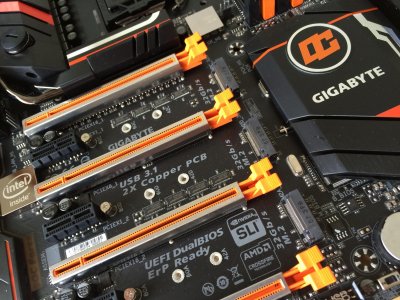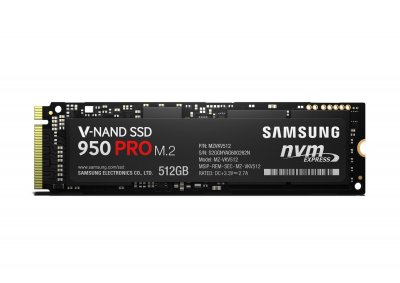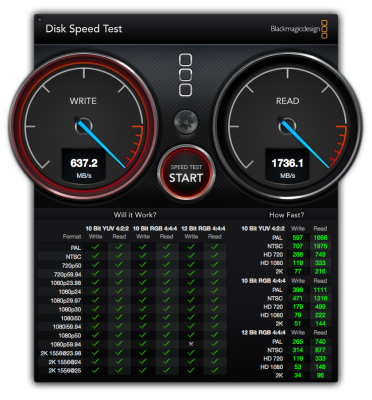- Joined
- Nov 17, 2009
- Messages
- 7,367
- Motherboard
- Z370N WIFI
- CPU
- i7 8700K
- Graphics
- HD 630
- Mac
- Classic Mac
- Mobile Phone
Update: This thread is now obsolete as JimJ, the author of the below mentioned NVMe driver, no longer supports his driver which has not worked since El Captian (then, only as a non boot drive). It will not work in Sierra or High Sierra. Additionally, Apple's High Sierra now natively supports NVMe SSDs. For Sierra and earlier macOS, see RehabMan's [Guide] HackrNVMeFamily co-existence with IONVMeFamily using class-code spoof as his driver will allow NVMe SSDs to be used as boot drives.
Great news for those who want to use the same types of super fast solid state drives that Apple uses. NVM Express (NVMe) M.2 solid state drives are now working in OS X with a new driver by JimJ at macvidcards. Because of Apple's EFI, these off the shelf SSDs cannot be used as boot drives in a standard Mac. However, any CustoMac with M.2 slot running Clover can use them as boot drive.
Download the NVMe driver for OS X:
http://www.macvidcards.com/nvme-driver.html
EDIT 2016-07: Rehabman's patch-nvme script (HackrNVMeFamily) is now our preferred method for enabling NVMe. See here for details.
M.2 is really a small PCI-Express (PCIe) connector on a motherboard which provides bus interfaces for PCIe, SATA, and USB 3.0. The M.2 standard and replaces the old mSATA standard. These slots were first available on the 9 Series chipset (16/32 Gbps, PCIe x2/x4) and are now double the speed (32Gbps, PCIe x4) on 100 Series chipset. Adapters are also available for any standard PCIe slot.
Here's an example of a three native M.2 slots on the Gigabyte Z170X SOC FORCE (between the normal PCIe slots):

There are three different types of standard M.2 drives. The first two use Advanced Host Controller Interface (AHCI); legacy SATA using AHCI and PCIe using AHCI. Fully functional drives such as the Samsung EVO M.2 (SATA using AHCI) and the Samsung SM951 M.2 (PCIe using AHCI) are already in the CustoMac Buyer's Guide. The third type is the new NVMe technology, only available over the M.2 PCIe slot. An example of this drive is the Samsung 950 Pro.
- SATA/AHCI drives are completely equivalent to normal SATA drives except with a different size/connector. Max bandwidth 600 MB/s. Example: 850 Evo M.2 (SATA)
- PCIe/AHCI drives use a faster connection than SATA/AHCI above, but still have the overhead of the AHCI protocol. Max Bandwidth 985 MB/s per lane (up to 4 lanes), but in practice limited by the protocol. Examples: Kingston HyperX Predator, SM941, SM951 AHCI
- NVMe drives have a streamlined protocol better optimized for solid state drive. Max Bandwidth 985 MB/s per lane (up to 4 lanes). Examples: Intel 750, SM951 NVMe, Samsung 950 Pro
We've tested using the M.2 Samsung 950 Pro and the SM951 NVMe drives with success in OS X. To run the new drivers, install the NVMeGeneric.kext in Clover's EFI/CLOVER/kexts/10.11 folder and boot. The results show NVMe drives are some of the fastest SSDs available.
If you have tested using the new drivers, please let us know by sharing your results here!
Related:
https://en.wikipedia.org/wiki/M.2

| Device | Size | Amazon | Newegg |
| Samsung 950 PRO | 512GB | Amazon | Newegg |
| Samsung 950 PRO | 256GB | Amazon | Newegg |
Last edited by a moderator:







